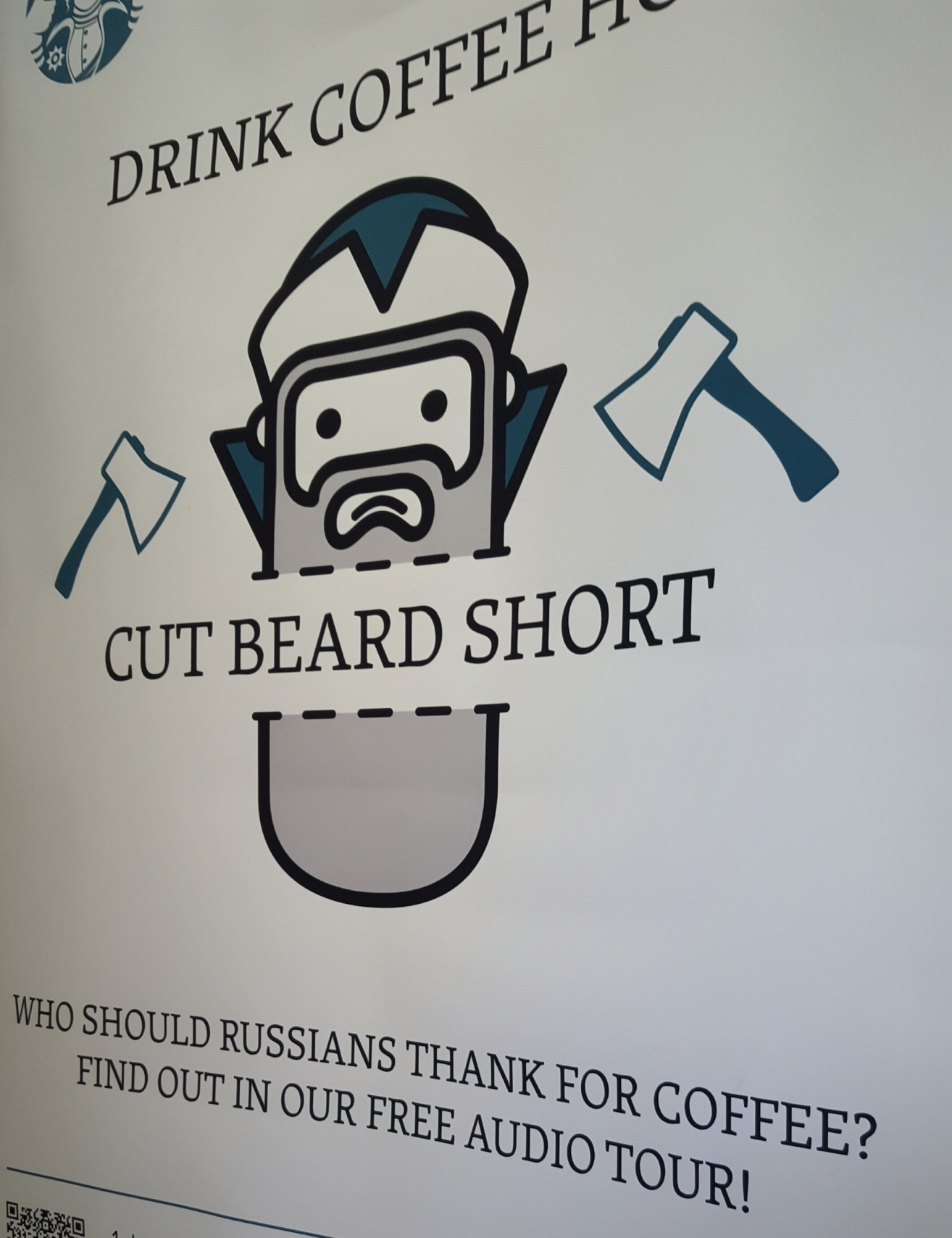 This summer I was invited to Russia. A fascinating journey to the land of vodka, bears and Putin. That’s what everybody thinks.
This summer I was invited to Russia. A fascinating journey to the land of vodka, bears and Putin. That’s what everybody thinks.
I was on a mission to discover something else but vodka. Coffee!
I got a few bags of coffee from five different roasters from Australia and head to Russia to visit some of the biggest coffee houses and Russian Barista Association. What did I expect? Not much, because I even didn’t know whether a coffee culture existed there. Well, here is one big snobby thought of mine.
In Melbourne you don’t hear a lot about Russian baristas. Hmmm, not me at least.
But according to BusinesStart analysis the volume of the Russian coffee market reached more than $3 billon US dollars. It is one of the big markets in the world! The supply of coffee in Russia has increased by almost 80% in the last 5 years with 30% of the volume consumed in two main cities, Moscow and St Petersburg. Definitely something to look at.
I arrived in St.Petersburg at midday. My thirty hours journey added up to one very long day in the most beautiful city in Russia. I just had time to get a shower and run to my first cupping.
So many questions raced through my mind: Is the water good here? Can you drink it from the tap? How do they choose a water supplier if they buy potable water? How do they prepare coffee? Which tools do they use? I was also curious to find out whether our coffee tasted anything like it does back home. And on top of this I wanted to find out how established this market is and what growth potential they have.
I was on a mission with the Australian coffee flag in my hand!
Now imagine! A Scandinavian style café inside of an old Baroque building. Sounds like a mad mixture? It is! Mad coffee espresso sits behind the main city streets. Here I met Irina, a Barista trainer and International coffee judge, who was leaving to Budapest the next day where the World Coffee expo 2017 was just about to open. It is 6 o’clock in the evening and the café is full. St.Petersburg doesn’t sleep, it is celebrating White Nights which means that the sun never disappears, so you can drink coffee at any time of the day, especially if you are not planning to go to bed. Definitely not in my case today.
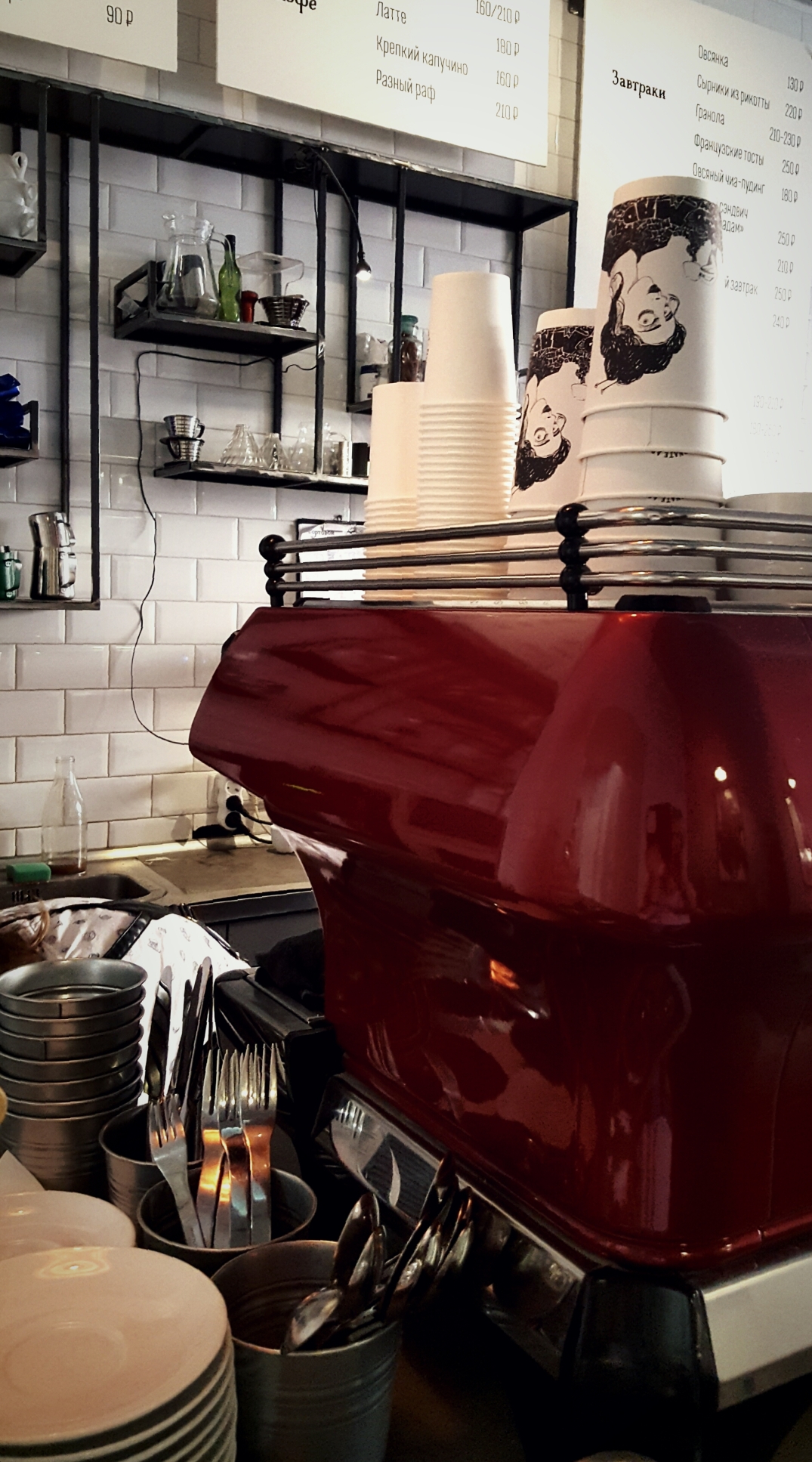 I noticed that the majority of coffee here is from Ethiopia and Colombia. We started cupping. I caught myself thinking that our coffee tasted good, but not as good as back home. I missed the vibrant note and the depth of a beautiful floral bouquet of my favourite Australian roaster. In comparison, their coffee was a bit darker but roasted to suit the quality of the local water. I was slightly disappointed of the performance of our coffee but decided to try their espresso. Well, after a drink I certainly felt better. Espresso in Russia is something not many people drink and I, probably, know why.
I noticed that the majority of coffee here is from Ethiopia and Colombia. We started cupping. I caught myself thinking that our coffee tasted good, but not as good as back home. I missed the vibrant note and the depth of a beautiful floral bouquet of my favourite Australian roaster. In comparison, their coffee was a bit darker but roasted to suit the quality of the local water. I was slightly disappointed of the performance of our coffee but decided to try their espresso. Well, after a drink I certainly felt better. Espresso in Russia is something not many people drink and I, probably, know why.
After the cupping I asked Irina what did she think about coffee. She seemed to be positively surprised by the variety of beans although I just brought coffee from Indonesia, Tanzania, Colombia and Ethiopia. The Russian coffee market is swamped by Ethiopian, Kenyan and Colombian coffee, so not often she would have an opportunity to try coffee from Sulawesi or Java. She mentioned, that as a judge she would be impressed to see coffee from Indonesia or Tanzania. But, Ethiopian Geisha took the first prize in today’s cupping.
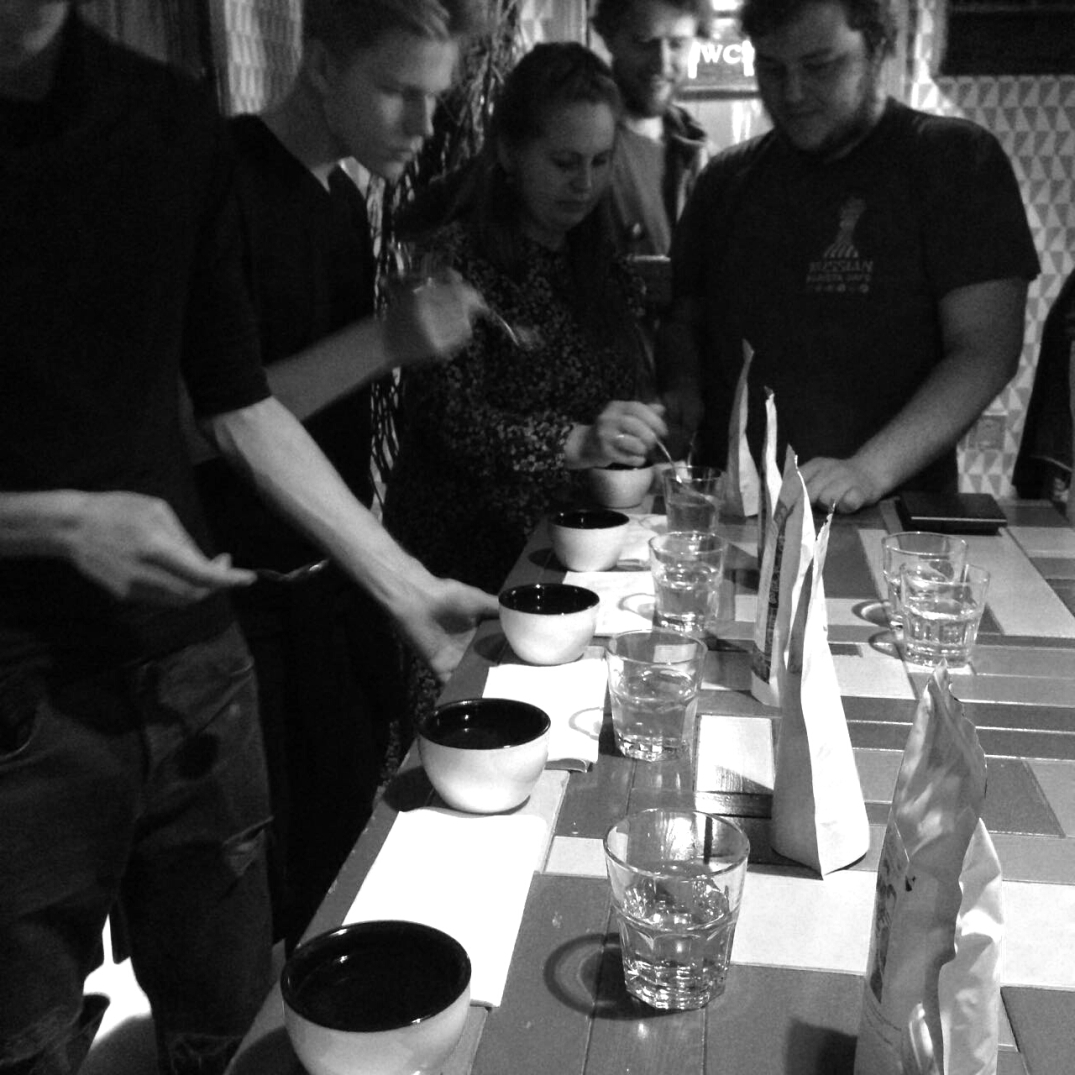
My second cupping was with one of the first and most interesting coffee houses “Bolshe coffee” – an unusual name with an unusual interior and one very friendly and professional owner, Nicolay. They do public cupping every Thursday which usually attracts around 15 people or more. The cupping with coffee from Melbourne was announced on their Facebook page and brought in 35 people or so. Not bad for a midweek event.
Nicolay went on to show me “his” St.Petersburg by visiting some amazing coffee places. It was so fascinating to see many alternative brews on every café’s menu and it costs less than the “standard” machine coffee. The main reason behind that idea is to attract the attention of alternative brewing methods and single origins. Some sort of a Marketing tool that promotes additional education. I have to say, it works. Here I saw more people drinking coffee from Chemex or V60 than in Melbourne.
A few days later I had a meeting at the North-West Coffee Company (NWCC) and Russian Barista Association (RBA). Lost somewhere in a forest of warehouses, the North-West Coffee Company shares an office with the RBA. And what an office it is! Run by an immigrant from England – Chris – NWCC is the biggest roaster in St.Petersburg. I brought a few samples in order to try their coffee with our Melbourne water. I call it “Revenge cupping”.
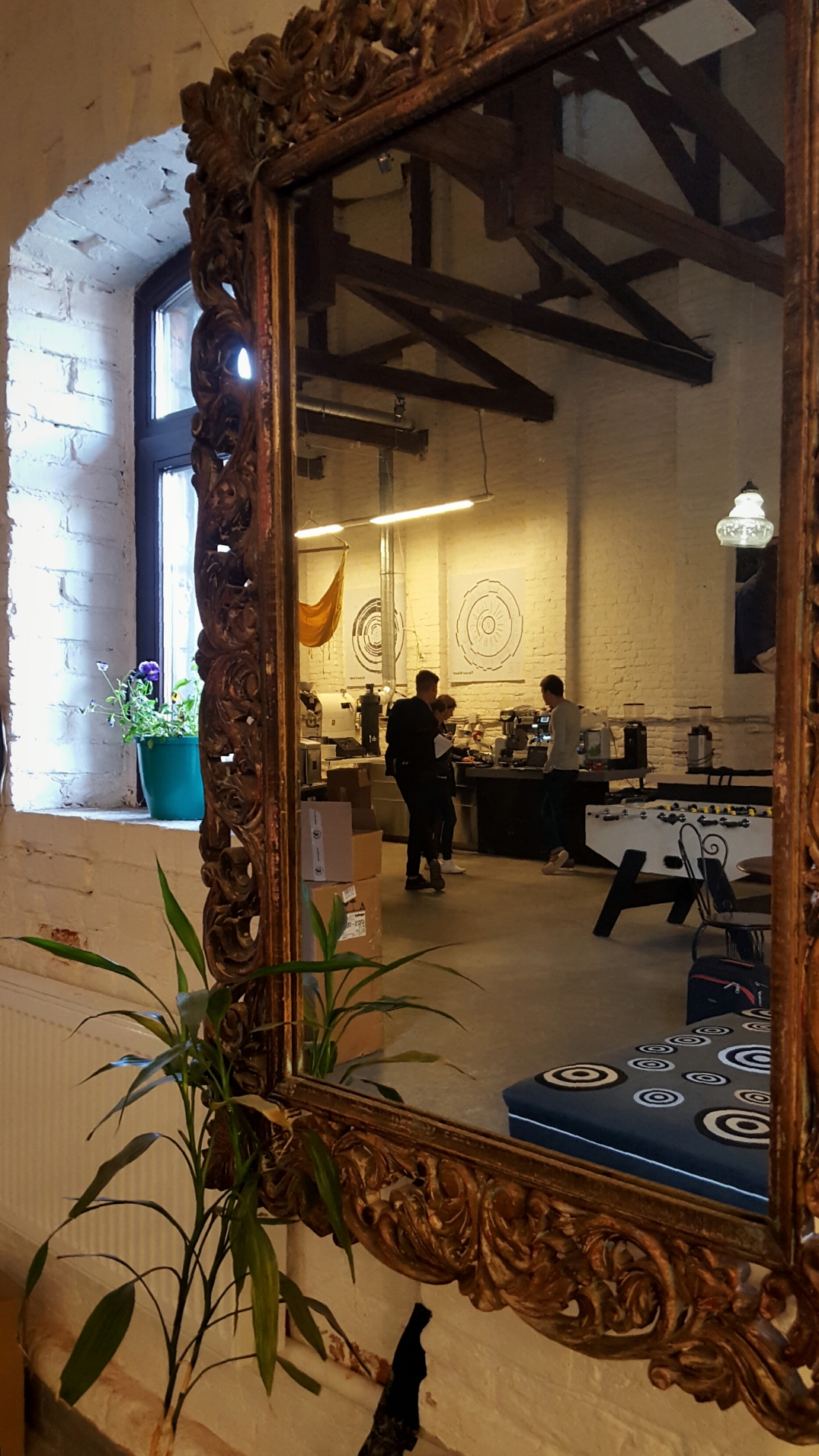
I have to say, I tried their coffee in a café and was pleasantly surprised. To be honest, even their baristas don’t look much different to ours: tattoos, beards, shaved heads and snobby looks.
We set up for a cupping on the workbench next to the Mahlkönig grinder and Hario scales. I caught myself in a déja vu image. That’s how I know it from Melbourne. We talked about the industry, it’s difficulties and the necessity of education and investment into barista’s training, coffee supplies, the lack of International workshops and about water quality. Unfortunately, no one drinks water from the tap in Russia and it made my life so much more difficult. I was struggling to throw one plastic bottle after another in the bins.
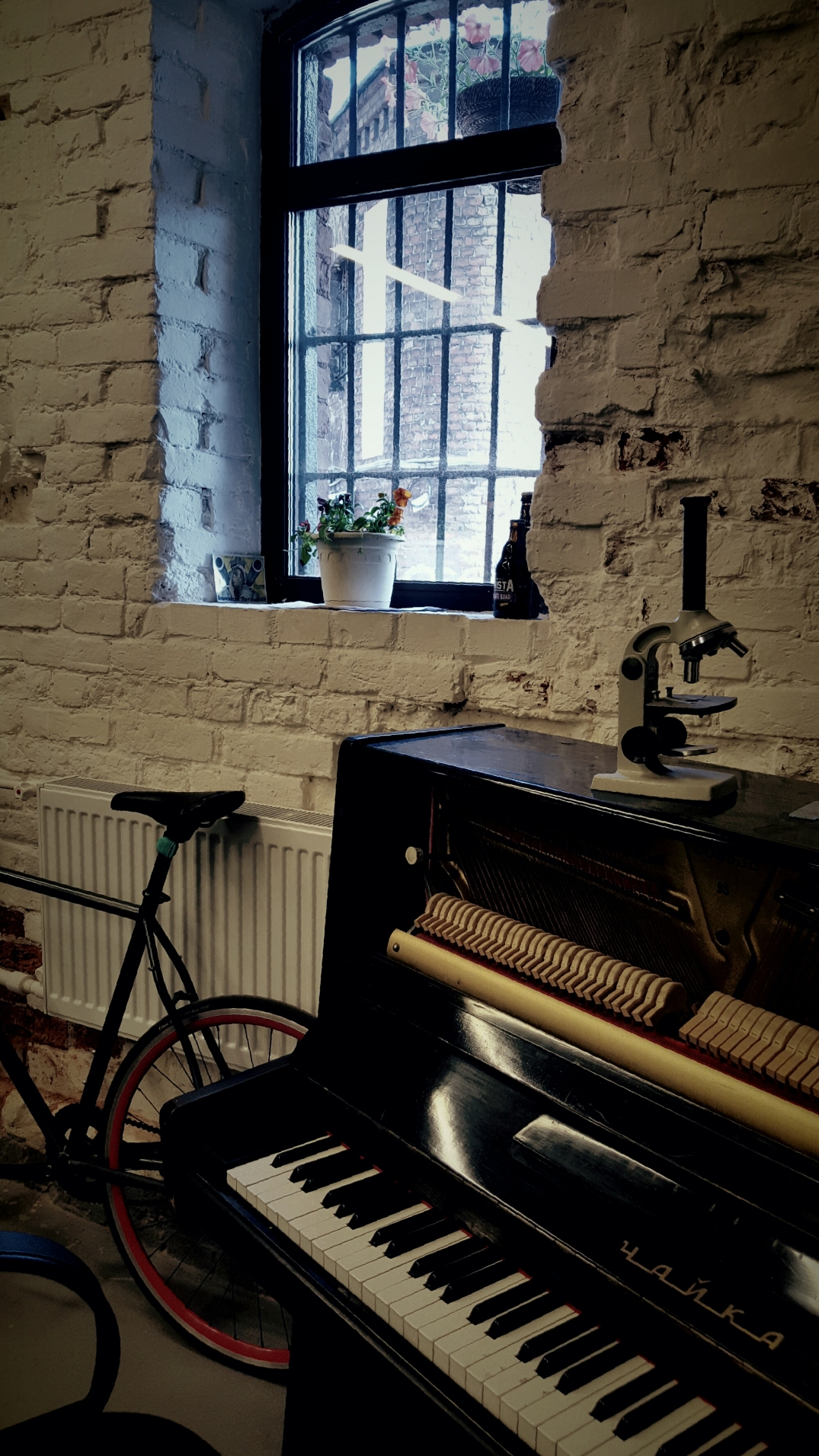
A few days later I head down to Moscow which was such a different experience.
After visiting a few cafés, the famous and biggest chain Double B, Drinkit and a few others, I had a clear understanding that coffee culture here is definitely on a rise and people are prepared to pay premium for a better quality, cup of coffee in Russia costs around 300 Rubble, what’s equivalent almost to $8 AUD.
Water in Moscow was closer to Melbourne’s, yet in Terrefacto – one of the biggest roasters in town – they took a decision to buy a potable water in big 19 litres bottles. It gives them consistency and provides filtered, good quality water.
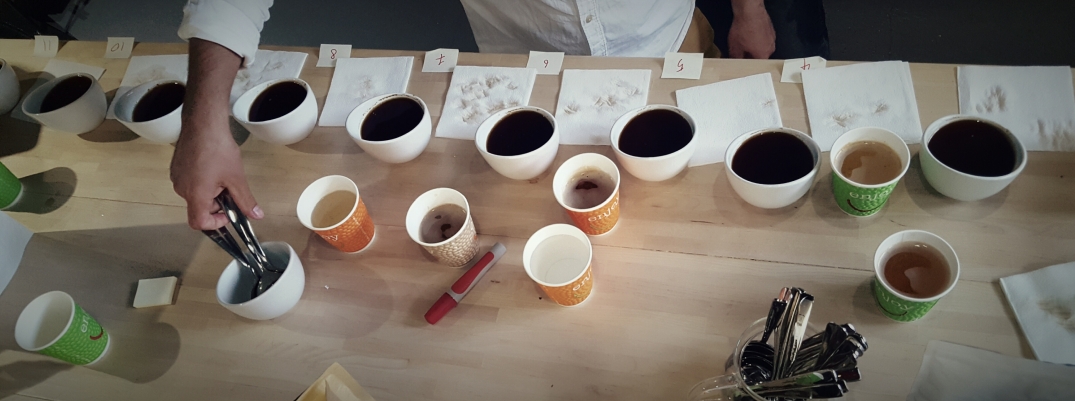
I definitely was expected in Moscow. In the office of Terrefacto we had one of the biggest blind cupping sessions together with the whole team plus some International guests. Australian roasted coffee was on offer directly next to the coffee from Copenhagen and coffee roasted in Moscow, some of the samples were even from the same region. It was a great experience where I got to know not just new talented people but passionate coffee professionals from different countries.
You might wonder, what does coffee in Moscow taste like? Great! Our coffee tasted better in Moscow too, it was fruitier and rounder than in St.Petersburg, though slightly “tired” from travelling. During the blind cupping we were guessing the origin and the roaster of the coffee, and to be fair few times I was confused where was our coffee and where was a coffee from Moscow. Light roasts, juicy, mouthful coffees from Ethiopia and Kenia were a few of my favourites. But for home I took Moscow roasted coffee from Yemen. That’s something I look forward to cup in Melbourne soon.
I spent more than 3 hours there and we were sharing news from the coffee industry, deciding to keep in touch and, hopefully, make this an annual experience.
Overall, this Russian experience was very positive. There is a lot to improve and develop as Russia is a vast land of opportunities. But as it happens in any young market, it’s often starts with a few passionate fanatics and that means curiosity and fast development. Next year, it might be a completely different story. Hopefully, I will be back soon with a news from a Russian Coffee Forum.